

CarExpert.com.au
The CarExpert team's favourite cars of 2025
2 Days Ago
The Hyundai i30 Sedan N Line not only has sharp styling inside and out, it has some serious substance underneath.
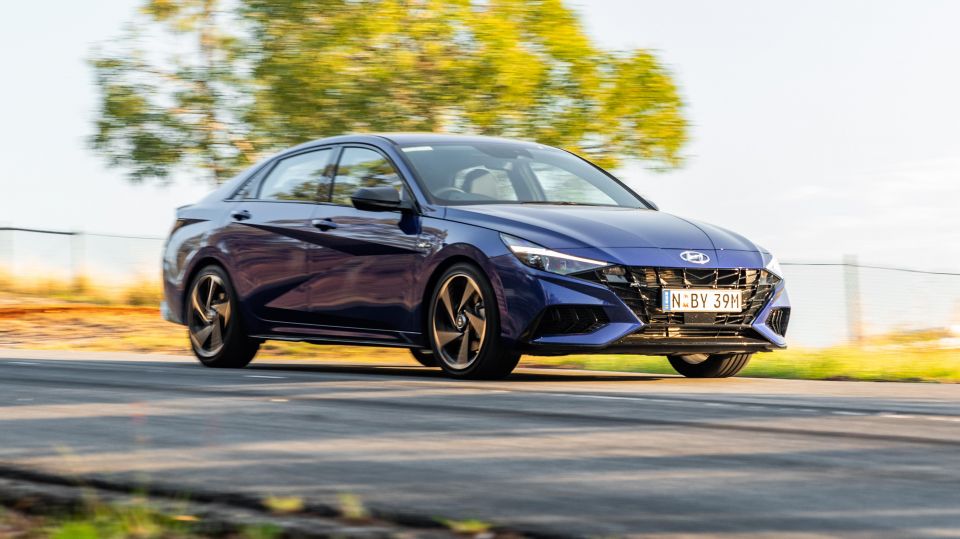
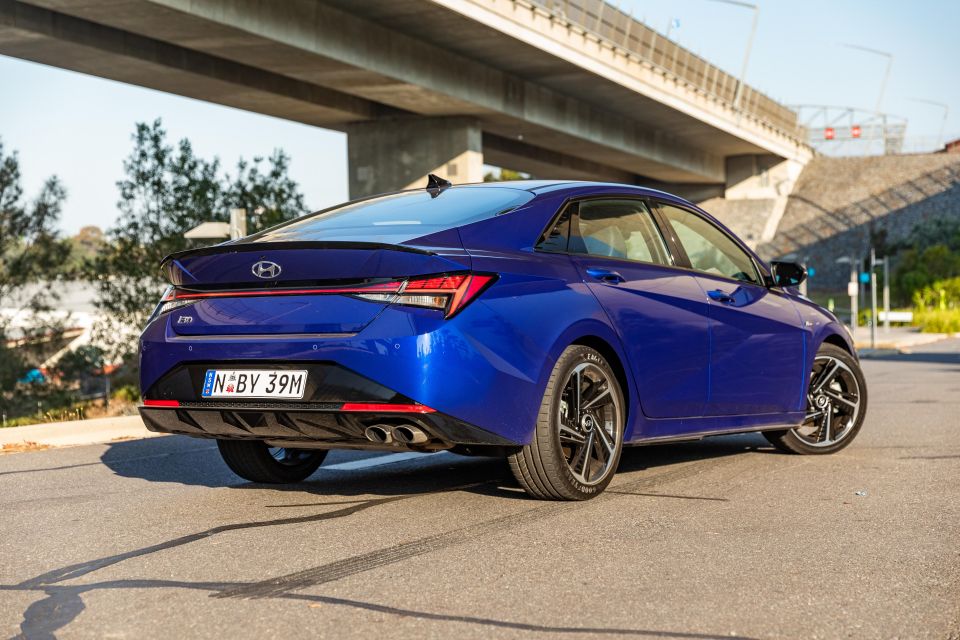

Quickly see how this car stacks up against its competition. Select any benchmark to see more details.
Where expert car reviews meet expert car buying – CarExpert gives you trusted advice, personalised service and real savings on your next new car.
SUVs may have well and truly overtaken passenger cars in popularity in Australia, but there are still some passenger car segments that see significant volume. One of these is the small car segment.
Hyundai is now within striking distance of the dominant Toyota Corolla when it comes to sales, thanks largely to the introduction of a four-door i30.
The Hyundai i30 Sedan is the new-generation Elantra by another name, and sits alongside the popular i30 Hatch. But while it rides on Hyundai’s latest small car architecture, wears radically different styling and features a different base engine, Hyundai has ensured there are parallels between these two seemingly disparate i30s.

The model line-up is largely the same, for starters, and that includes Hyundai’s offering of a sporty N Line version of both the older hatchback and the fresher sedan packing the same turbocharged four-cylinder engine.
Hatchbacks have long been the more popular body type in this segment, particularly when it comes to sportier models. What few sporty small sedans there were have largely evaporated – gone are the days when you could buy a new Volkswagen Jetta 155TSI, Nissan Pulsar SSS, Holden Cruze SRi or Mitsubishi Lancer GSR.
While others have deserted this concept, the Hyundai Motor Group has remained committed and offers the Kia Cerato GT and the Hyundai i30 Sedan N Line.
The i30 Sedan N Line rings up at $31,190 before on-road costs with the standard six-speed manual or $33,190 beforeon-roads for the seven-speed dual clutch automatic, as seen here.
There’s a better equipped version, the N Line Premium, which costs $5000 more than the N Line auto and is available only with an auto.
For reference, the i30 N Line manual hatchback is priced at $29,720 before on-roads, or $31,720 list with the auto.
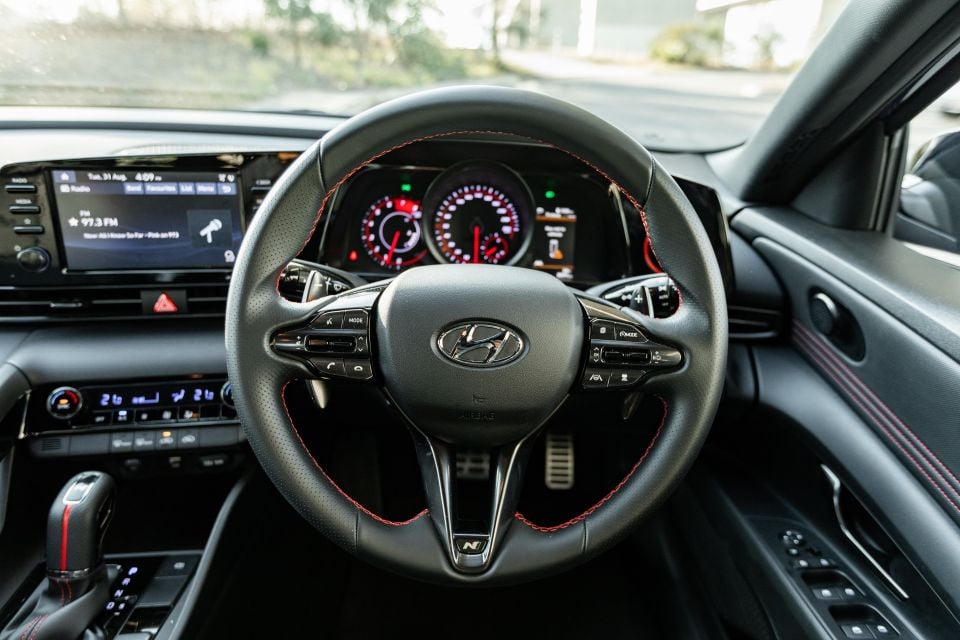
All paint finishes bar solid Polar White cost an extra $495, including our tester’s striking Intense Blue. All up, our tester had a drive-away price for a Sydney postcode of $35,451.
Corporate cousin Kia doesn’t offer its Cerato with this engine and a similar level of standard equipment, forcing you to step up to the loaded GT at $35,790 before on-roads. It’s currently being offered for $37,990 drive-away.
The Mazda 3 G25 Evolve SP doesn’t have a turbo but it comes closest of all the N Line’s other rivals to matching it in power and torque. It’s priced at $31,290 before on-roads with the manual, or $32,290 list with the auto. Less powerful sedans also include the Toyota Corolla ZR ($34,195) and Subaru Impreza 2.0i-S ($31,290).
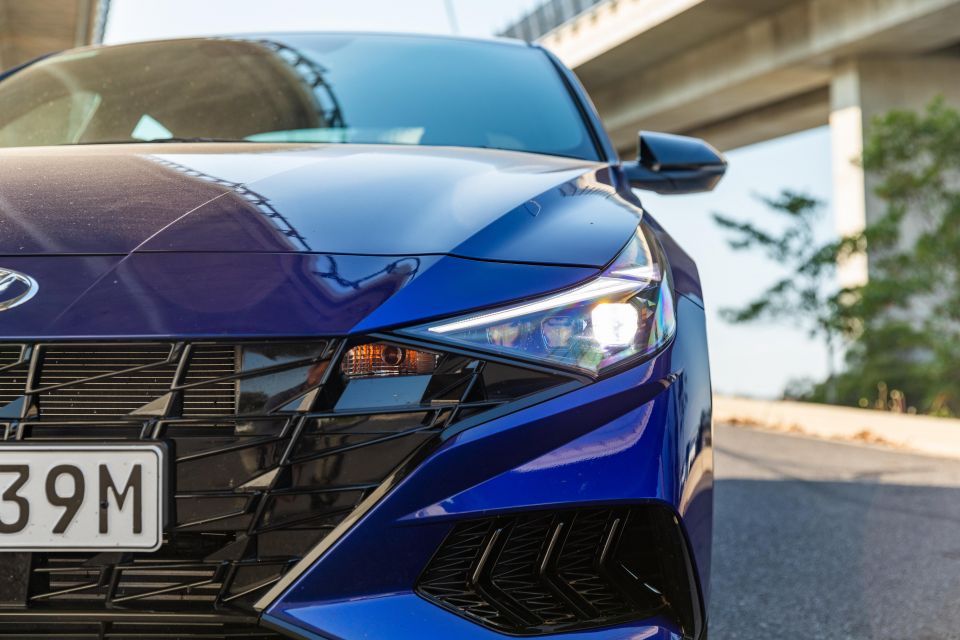
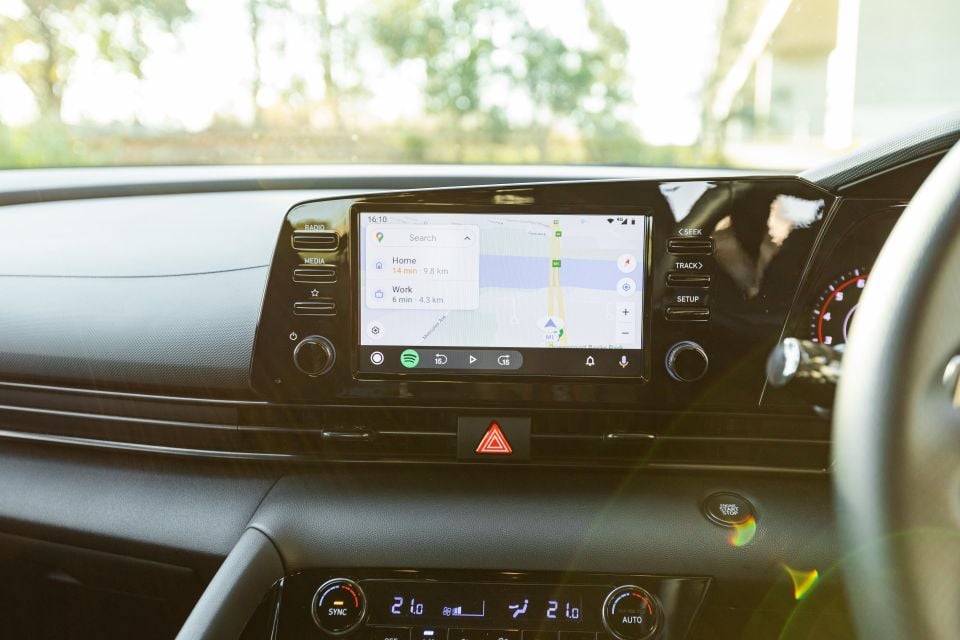
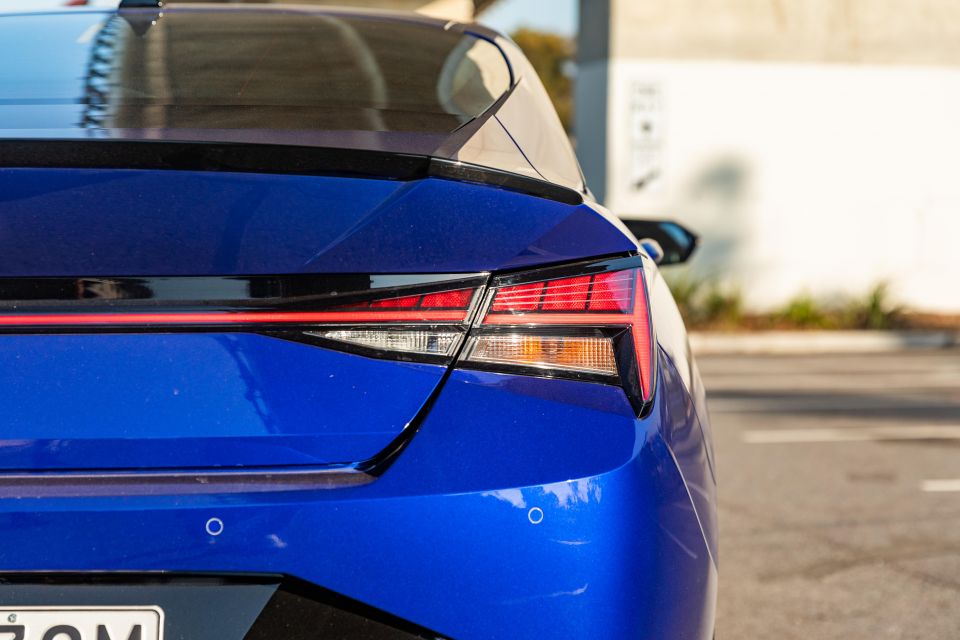
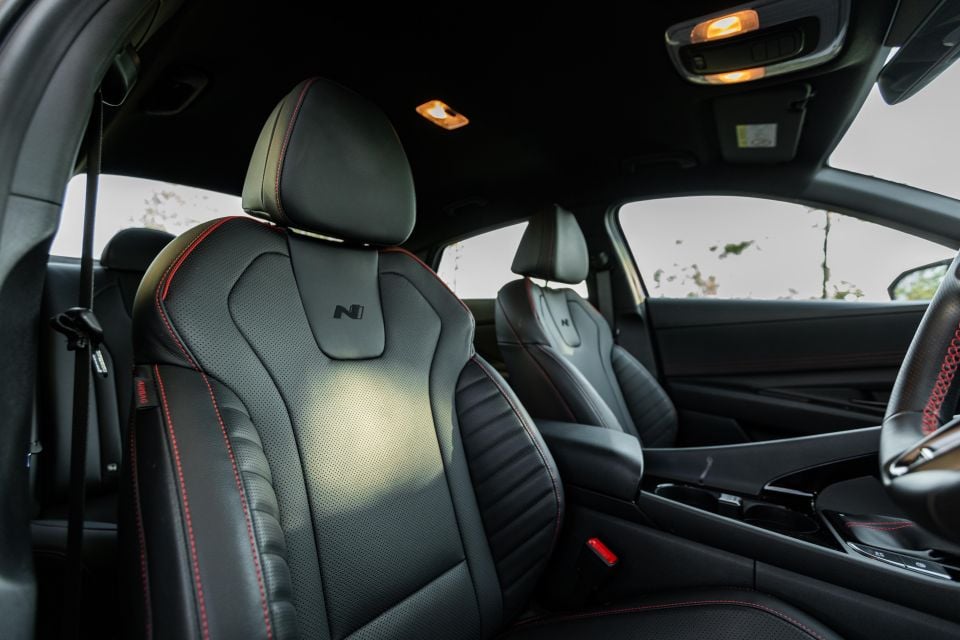
Buy your new car without the stress. It's fast, simple and completely free.

Great service from Travis and team, second time I have used this business would not hesitate to recommend them to anyone
Craig C.
Purchased a Ford Ranger in Sunshine Coast, QLD
CarExpert helped Craig save thousands on his Ford Ranger, now let us save you on your next new car.
Find a deali30 Sedan N Line highlights:
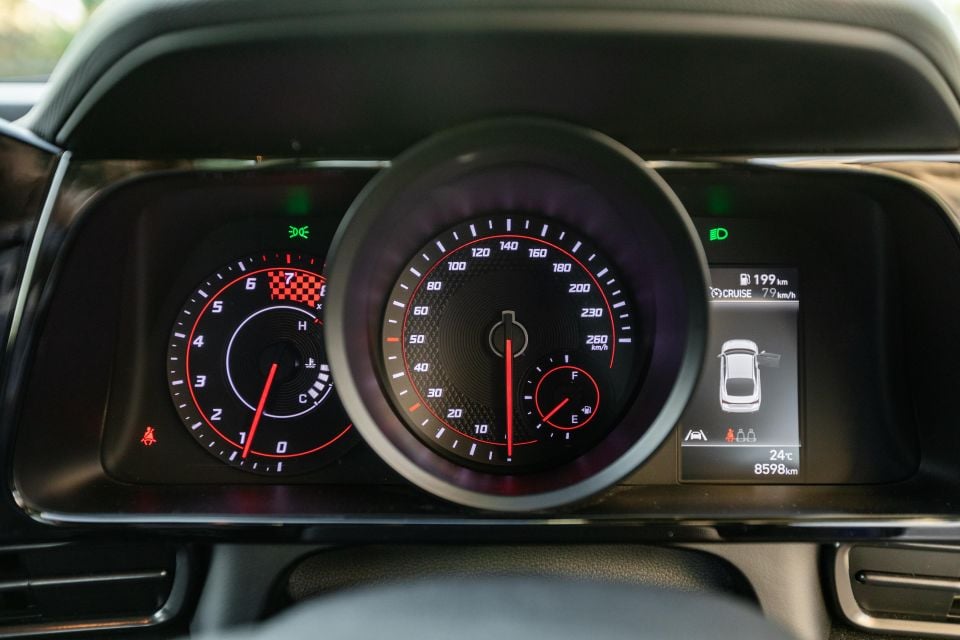
That’s in addition to equipment found on the base Active, such as:
If you want even more kit, you can step up to the N Line Premium which features a 10-way powered driver’s seat, a sunroof, heated and ventilated front seats, dual 10.25-inch displays, and front parking sensors. All bar the digital instrument cluster can also be found on the Cerato GT.
Over the N Line, a Mazda 3 G25 Evolve SP features a 10-way power driver’s seat and a head-up display. Otherwise, the two sporty-looking sedans are quite evenly matched in equipment.
Interestingly, the i30 Sedan N Line runs on Goodyear Eagle F1s while the i30 Hatch N Line uses Michelin Pilot Sport 4 tyres. Safety equipment aside, however – more on that in a moment – the N Line hatch and sedan models are specified to the same level.
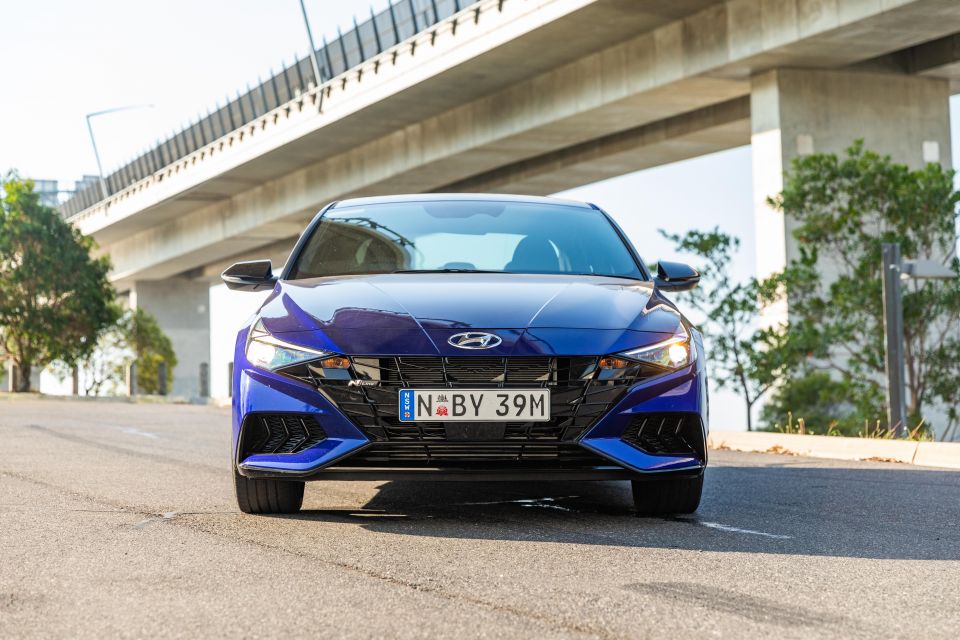
The i30 Sedan has yet to be tested by ANCAP. As it isn’t sold in Europe, there’s no Euro NCAP rating to use as a reference either. It’s worth noting the US’s IIHS awarded the similar US-market Elantra a 2021 Top Safety Pick rating.
Standard safety equipment includes:
While the N Line manual gets blind-spot monitoring and rear cross-traffic alert, the N Line auto features active blind-spot assist and rear cross-traffic assist that’ll apply the brakes if it detects an imminent collision.
Notably, the N Line hatch misses out entirely on any kind of blind-spot or rear cross-traffic system, even though these features are available elsewhere in the i30 Hatch range. They were even available on the SR hatch, which the N Line replaced.
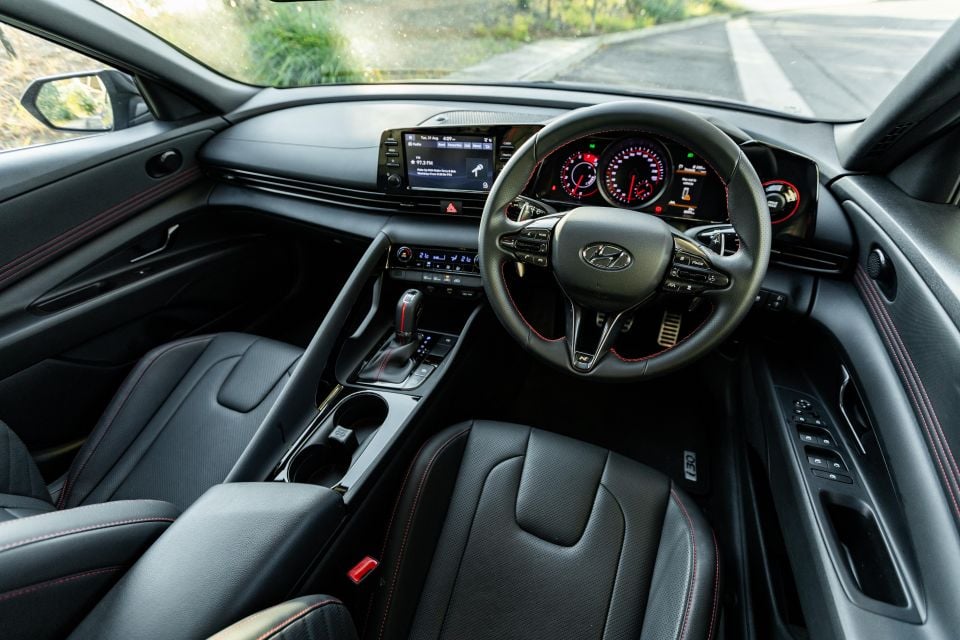
It’s refreshing that Hyundai didn’t just put a boring interior into this aggressively-styled vehicle.
Inside, you’ll find a sporty, cockpit-style dashboard, with the front passenger even getting a grab handle on the side of the centre console.
It’s all finished in black – no striking two-tone here like in the Elite – but it’s broken up with red stitching elements on the seats and doors. Speaking of the seats, they’re comfortable and supportive.

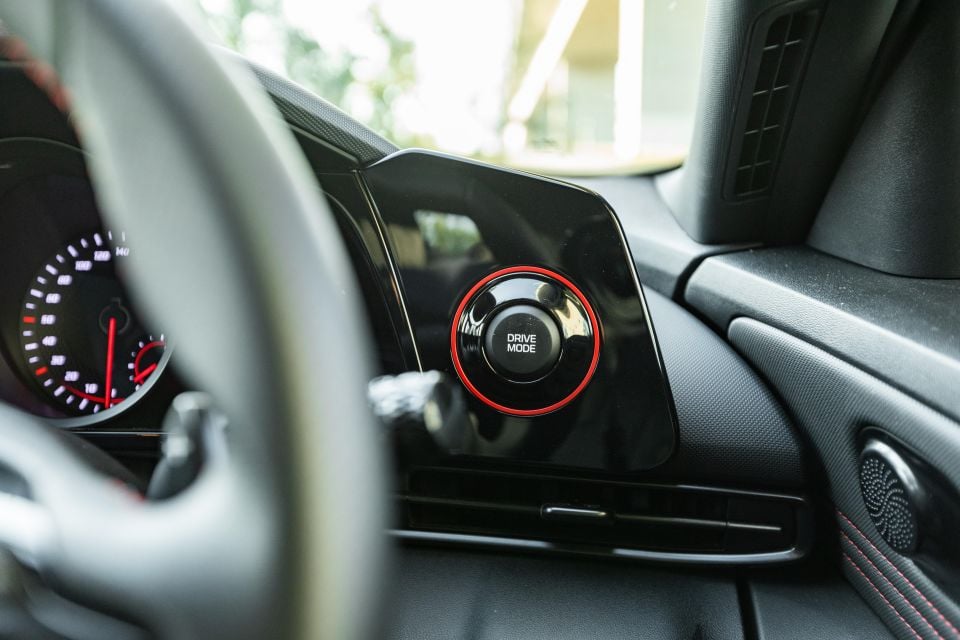
The dashing design is arguably let down by material quality. While soft-touch plastics are used on the dash top, the lower half of the dashboard – including the grab handle – is finished in hard, scratchy plastics. That isn’t unusual in this segment, however such an alluring design deserves just a touch more luxury – why not put some leatherette on that grab handle, for example?
There are some nice, tactile inclusions, however. The column stalks, for example, feel high-quality and nicely damped, and all the doors have leatherette inserts.
There’s no satellite navigation in this variant but, as is unusually the case for Hyundai products, this means it’s in turn blessed with wireless smartphone mirroring. While on a couple of occasions Android Auto wouldn’t automatically connect on start up, it was usually just a press of the screen away and worked without fault.
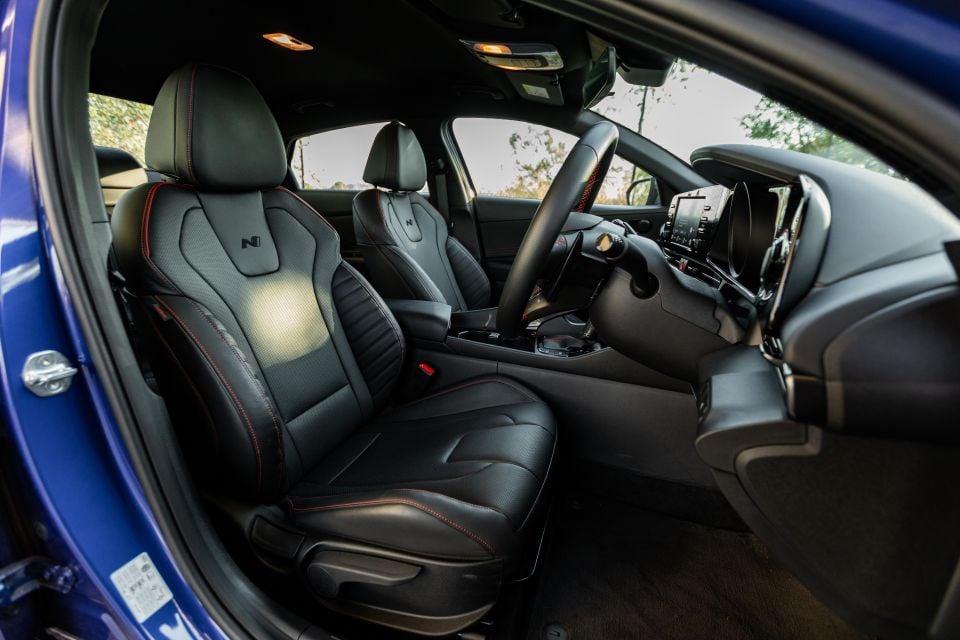

The 8.0-inch screen is a decent size, boasts reversing camera footage of a decent resolution, and is flanked by physical shortcut buttons for various functions. There’s also a star button by the screen that you can program as a shortcut – I programmed it to take me to the home screen, as there’s unusually no physical home button.
In terms of storage, there’s a shelf at the base of the centre stack containing the wireless charging pad, while along the centre console there are two cupholders plus a fairly deep bin. The bottle holders in the doors fit 600ml bottles.
It’s possible mid-sized sedan sales have evaporated not just because of SUVs, but because small cars have gotten increasingly roomy. For someone 180cm tall, there’s ample legroom behind a front-seat occupant the same size. In fact, there’s a genuinely impressive amount of legroom back here, while the floor is mostly flat.
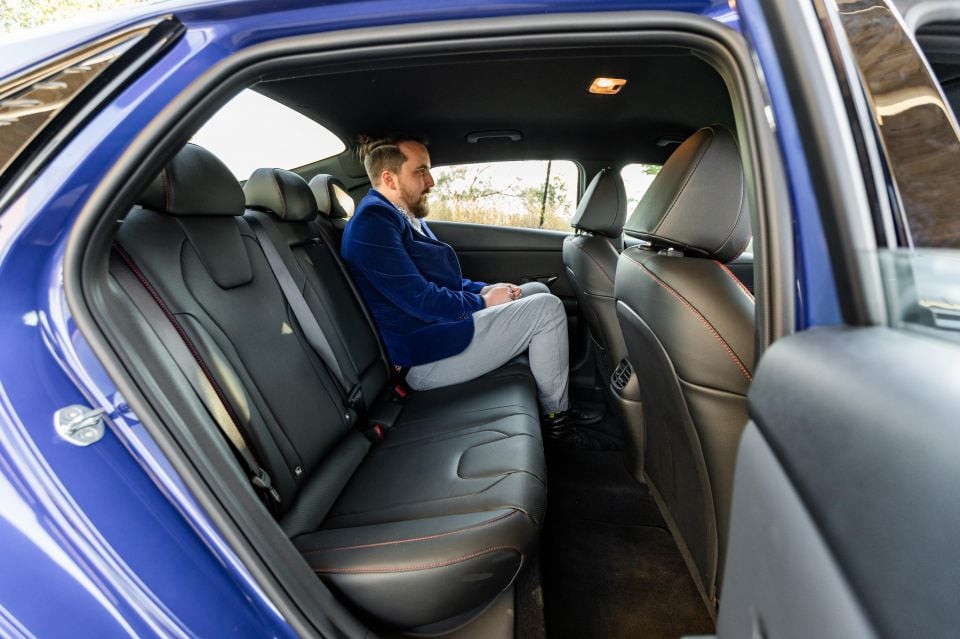

The swoopy roofline does impinge on headroom in the rear, however. I’m 180cm tall and if I don’t slouch, my hair touches the roof. Slide across to the slightly raised centre seat and the headroom situation gets more dire. A Cerato sedan is more comfortable for passengers.
Rear-seat occupants get air vents, a fold-down centre armrest with cupholders, and bottle holders in the doors large enough for a 600ml bottle, but there are no USB outlets back here.
If you have small children, you can use one of the three top-tether anchor points for a child seat. There are also ISOFIX points for both outboard seats.
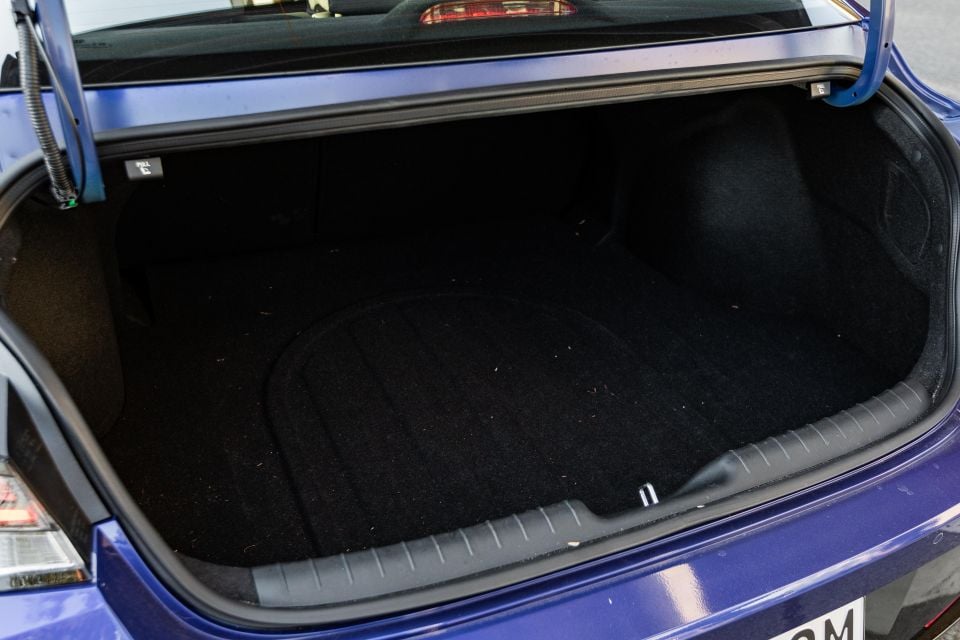
The boot is spacious, with 474L of capacity. It’ll swallow two standard-sized suitcases whether you orient them vertically or horizontally, and you can drop the rear seats for more room.
Much as the Cerato is slightly more spacious in the back seat, it’s also more capacious when it comes to cargo – the Kia’s boot measures 502L. The Hyundai shades the Mazda 3 however, which has a quoted figure of 444L.
Unlike the i30 Sedan Active and Elite, which have a full-sized alloy spare, N Line and N Line Premium models make do with a space-saver.
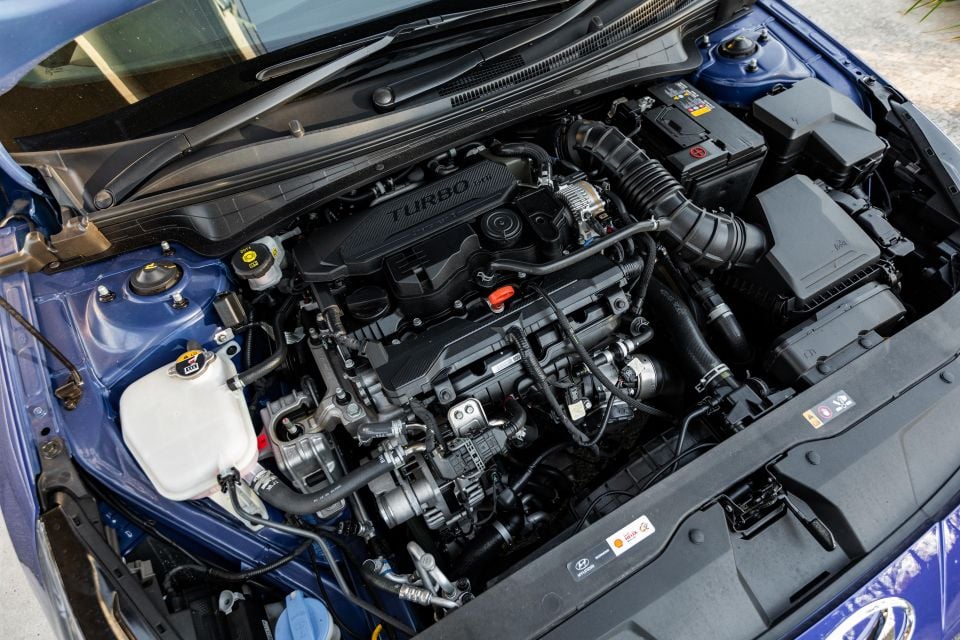
The N Line is powered by a turbocharged 1.6-litre four-cylinder engine producing 150kW of power at 6000rpm and 265Nm of torque at 1500-4500rpm, identical outputs to the Cerato GT. It’s mated to either a six-speed manual or seven-speed dual-clutch automatic transmission.
Those outputs are a healthy increase from the naturally-aspirated 2.0-litre found in lesser i30 Sedans, which is down 33kW and 74Nm.
Unlike the Kia, however, the Hyundai’s motor wears the company’s new Smartstream branding, which brings fuel-saving and performance-boosting technologies like Continuously Variable Valve Duration which regulates the duration of valve opening and closing to suit driving conditions. Hyundai claims the CVVD-equipped 1.6 T-GDi petrol cuts fuel use by 5.0 per cent and emissions by up to 12.0 per cent, while boosting performance by 4.0 per cent.
By comparison, even the most powerful Mazda 3 in Australia produces 138kW at 6000rpm and 252Nm at 4000rpm from a naturally-aspirated 2.5-litre four-cylinder.
Other small sedans like the Toyota Corolla (125kW/200Nm) and Subaru Impreza (115kW/196Nm) don’t even come close.

This is an enjoyable small sedan to drive.
You can choose between Normal, Eco, Sport and Smart drive modes, with the latter determining your driving habits by the position of the brake pedal and the operation of the steering wheel and tailoring parameters like the shift pattern and engine torque accordingly.
The steering is well-weighted and fluid in Normal mode, yet in Sport mode (and, in our experience, Smart mode) it adds some pleasant heft without feeling burdensome or artificial. Sport mode was something I tried once or twice but never for long, as it holds onto gears for too long. You can, however, use the paddles behind the steering wheel.
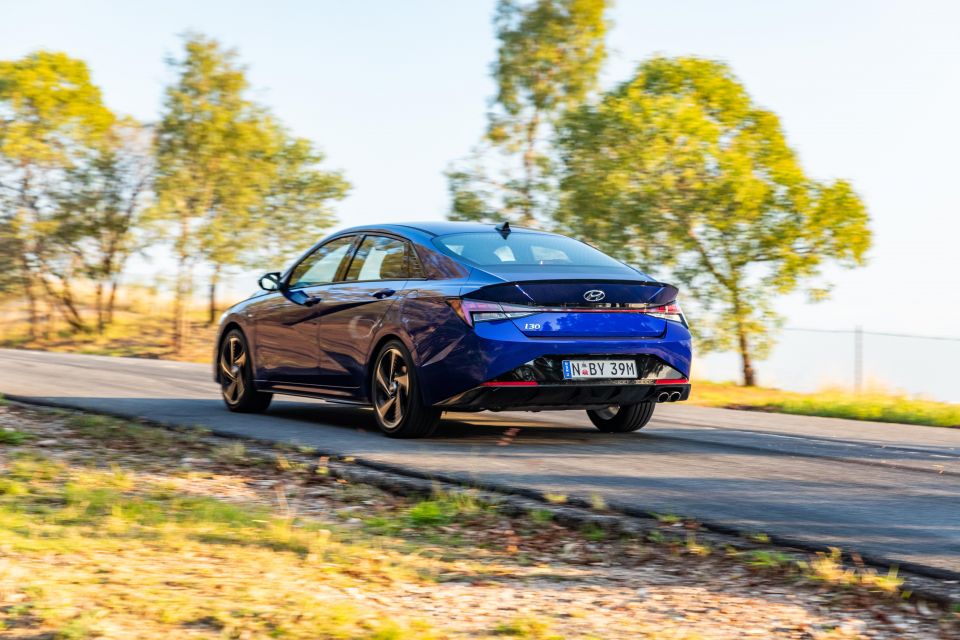
Where expert car reviews meet expert car buying – CarExpert gives you trusted advice, personalised service and real savings on your next new car.
The i30 Sedan is a willing companion on a back road. Toss it into a corner and it stays nice and flat, and it’ll hang on quite well on a winding road. This sharp handling doesn’t come at the expense of ride quality either – the i30 Sedan feels firm but it rarely gets unsettled, even on more poorly-surfaced roads.
The turbocharged 1.6-litre doesn’t transform the i30 Sedan into a speed demon but it’s much more flexible and pleasant than the standard 2.0-litre. It also sounds better than some of Hyundai’s other four-cylinder mills, which have a tendency to be coarse and droning.
On steeper grades it runs out of puff a little but it’s nevertheless a vastly more enjoyable engine than the 2.0-litre.
Dual-clutch transmissions can bring their own foibles, such as vibration and hesitation off the line. The i30 Sedan’s seven-speed unit, however, is a rather smooth affair and doesn’t really exhibit these issues, while also bringing with it the advantages of DCTs – namely, quick shifts.
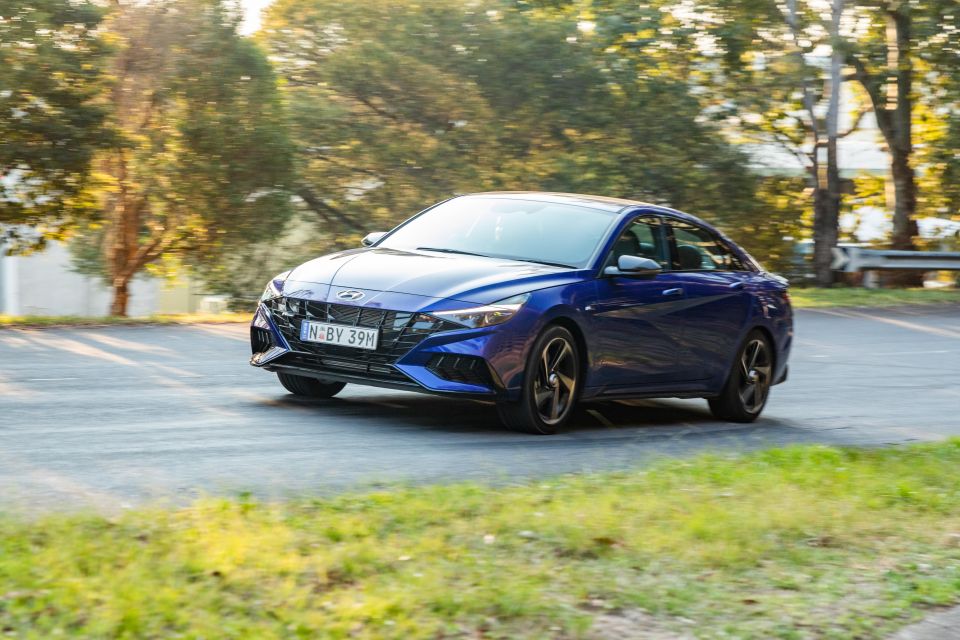
The weak link in the i30 Sedan package is its noise suppression. Tyre roar is just too audible on coarser-chip roads, making the cabin rather boomy. You’ll also notice it during some highway driving, though fortunately wind noise is kept largely at bay.
There’s adaptive cruise control, something you won’t find on the more powerful i30 Sedan N. Hyundai’s lane-keep assist and Lane Following Assist (lane centring) make their presence more keenly felt than rivals’ systems, which may not be to your liking.
The former defaults to ‘on’ at startup, while the latter you turn on by pressing a button on the steering wheel. In conjunction with adaptive cruise control, it makes highway driving effortless.
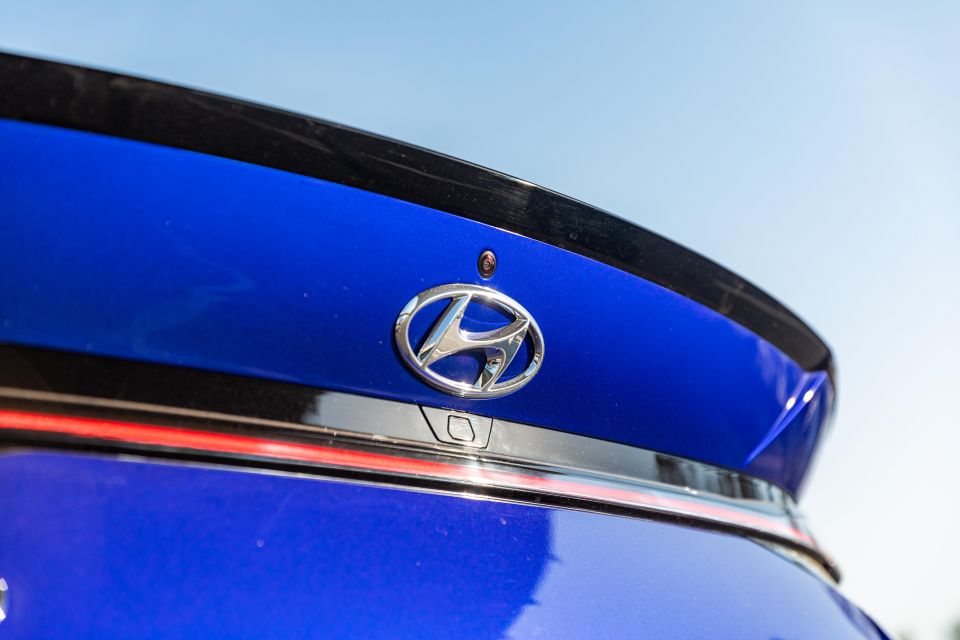
The i30 Sedan is covered by a five-year, unlimited-kilometre warranty.
Hyundai also offers capped-price servicing, with the first five services priced at $299 each. Like the Cerato GT or Mazda 3, servicing is required every 12 months or 10,000km, whichever comes first, instead of 12 months/15,000km like i30 Sedans with the 2.0-litre.
Servicing works out to be cheaper over the first five years than the Mazda ($322-367 per service) or the Kia ($275-$498).
Over a loop consisting of inner-city, suburban and highway driving, we averaged 7.2L/100km. Over the course of our time with the i30, we averaged 7.3L/100km overall. This is only fractionally off from the official claim of 6.8L/100km.
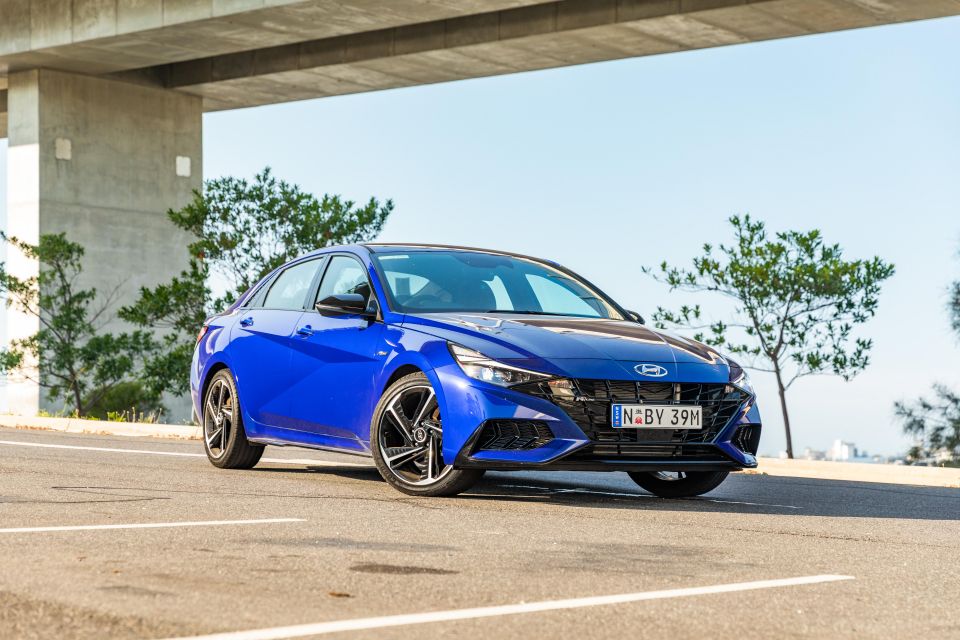
With the 2.0-litre engine, the i30 Sedan is a pleasant if unexciting commuter car. With the turbo 1.6-litre and N Line enhancements, it becomes a little bit more special while still proving comfortable on your daily commute.
The turbocharged engine puts a little spring in the i30’s step and sounds good, while the N Line’s ride remains pliant and it steers and handles well. It’s also quite thrifty.
It’s worth the extra outlay over the hatchback for the addition of blind-spot assist and rear cross-traffic assist, not to mention the much more alluring styling inside and out.
It’s not without its faults. It has plenty of legroom in the back seat, but headroom is lacking and there are no USB outlets. The cabin can also get boomy on coarse-chip surfaces, with too much tyre roar intruding.
If you want a small sporty sedan and the budget won’t extend to an i30 Sedan N, the N Line is worth a look.
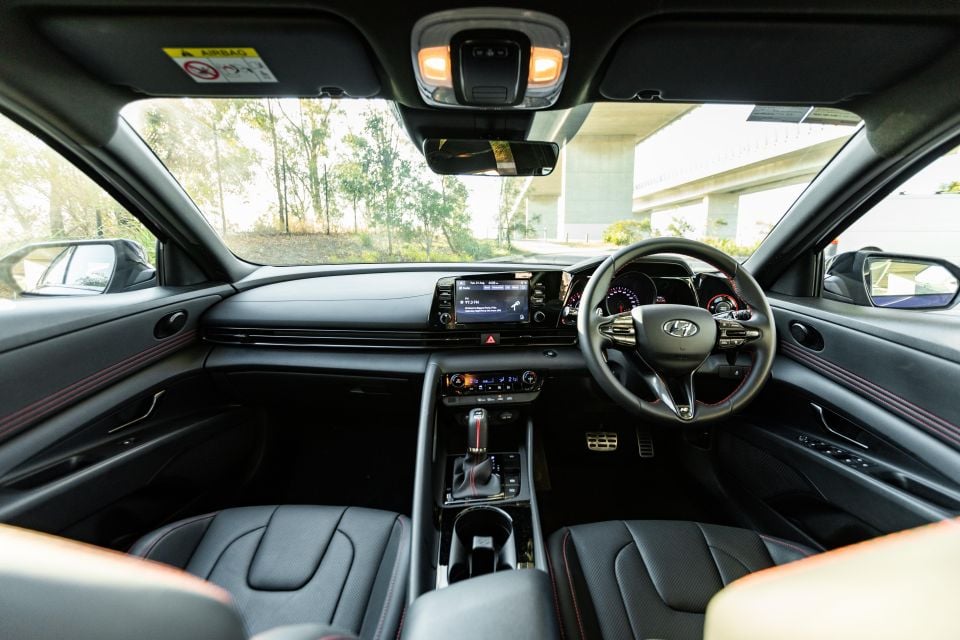
Click the images for the full gallery
MORE: Everything Hyundai i30
Where expert car reviews meet expert car buying – CarExpert gives you trusted advice, personalised service and real savings on your next new car.
William Stopford is an automotive journalist with a passion for mainstream cars, automotive history and overseas auto markets.


CarExpert.com.au
2 Days Ago


Max Davies
4 Days Ago


Damion Smy
4 Days Ago


Max Davies
4 Days Ago


Max Davies
6 Days Ago


Damion Smy
7 Days Ago